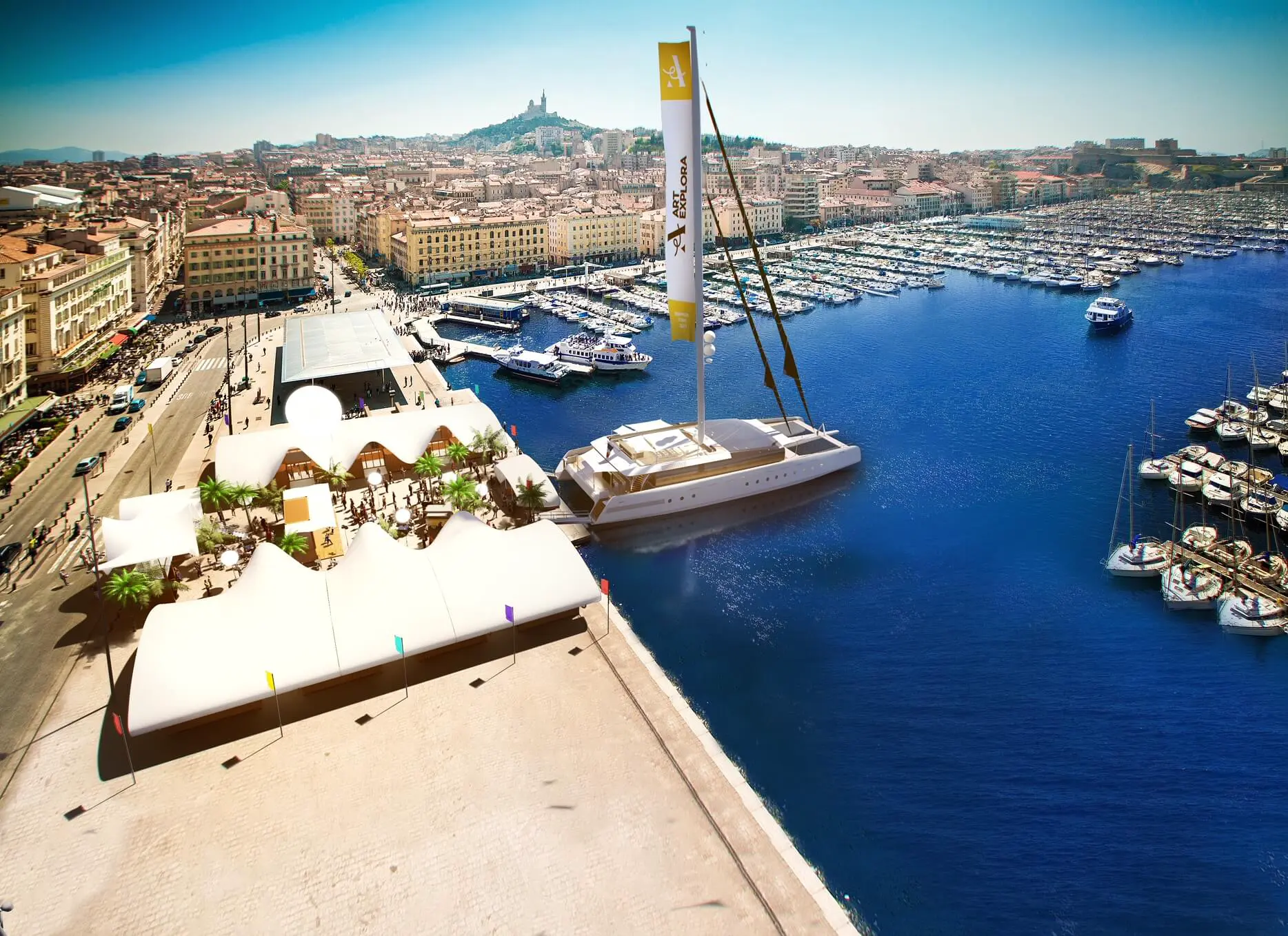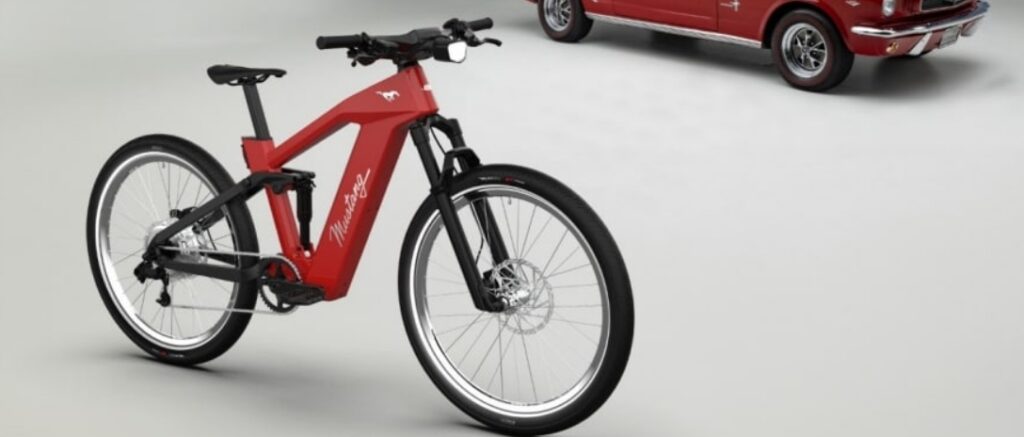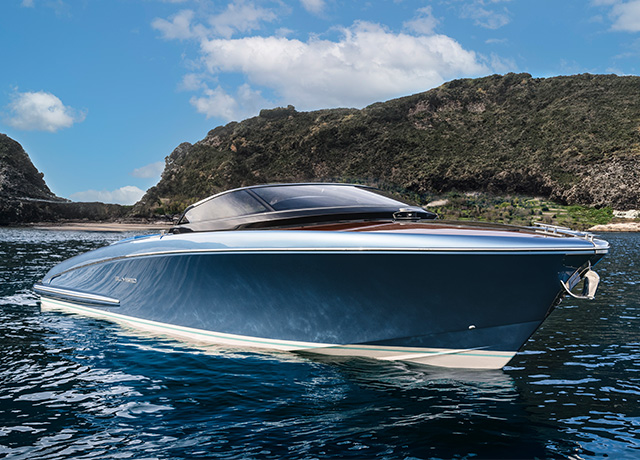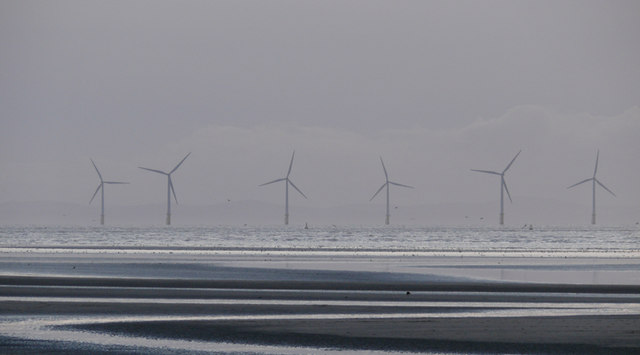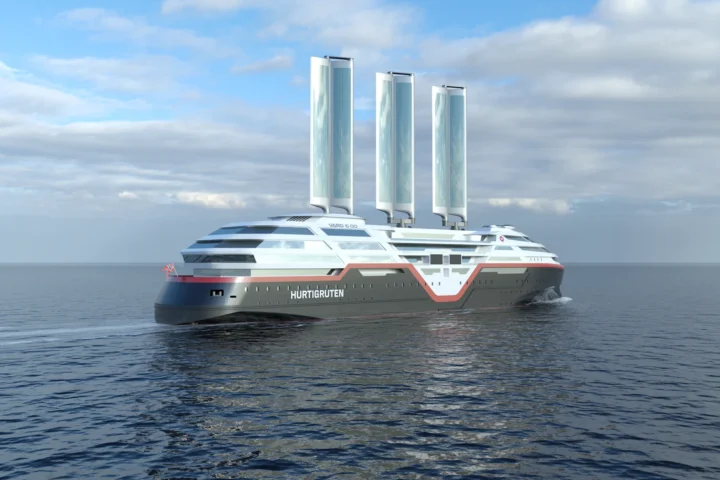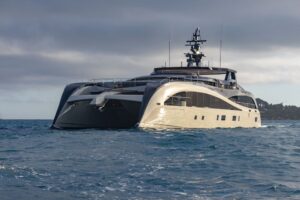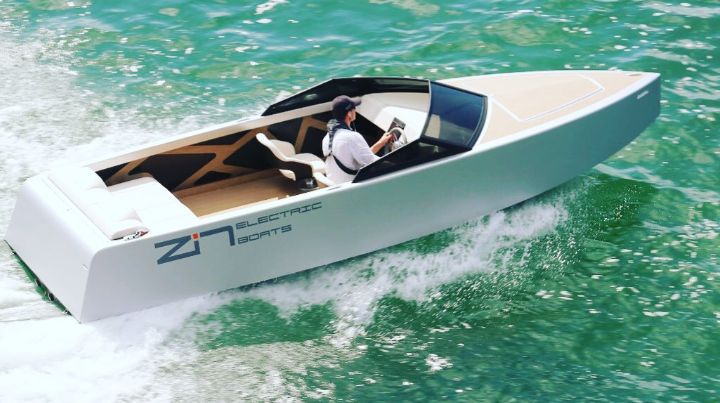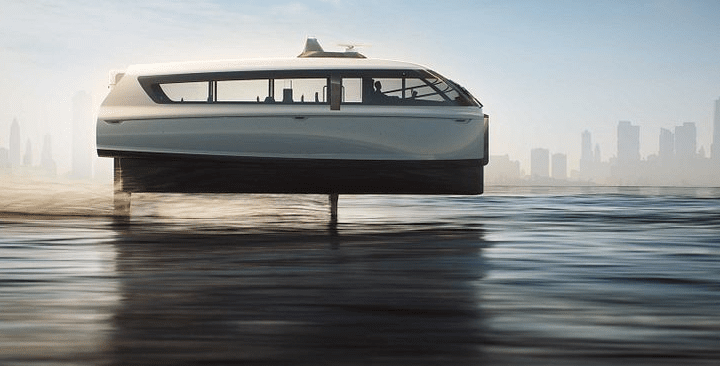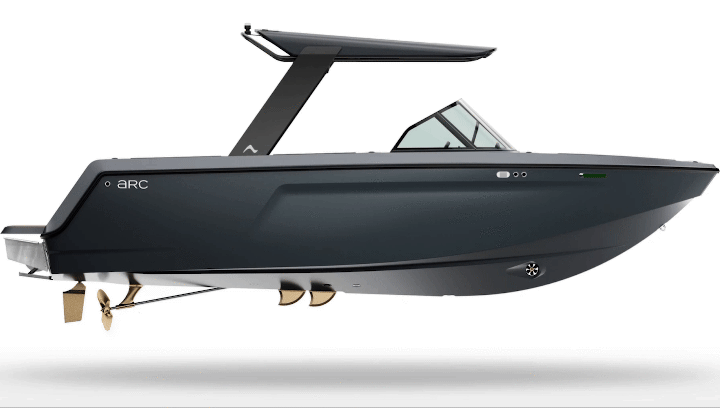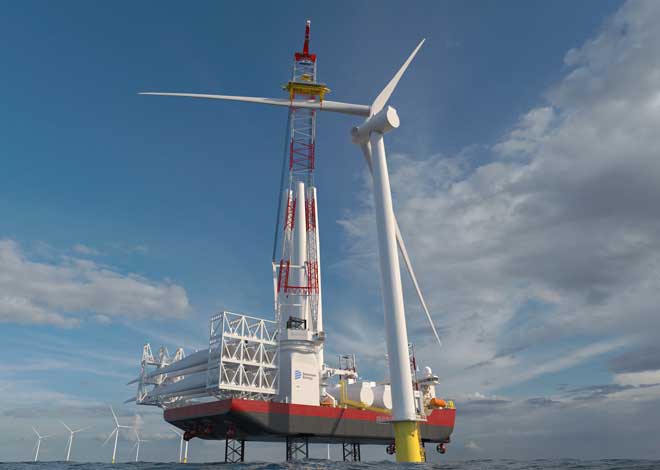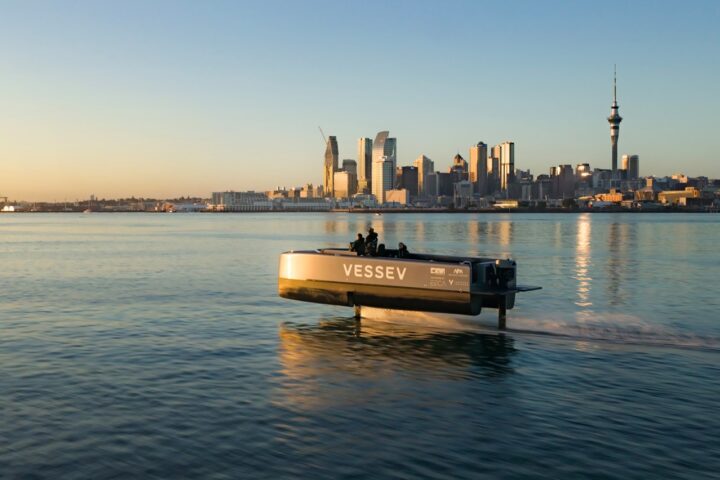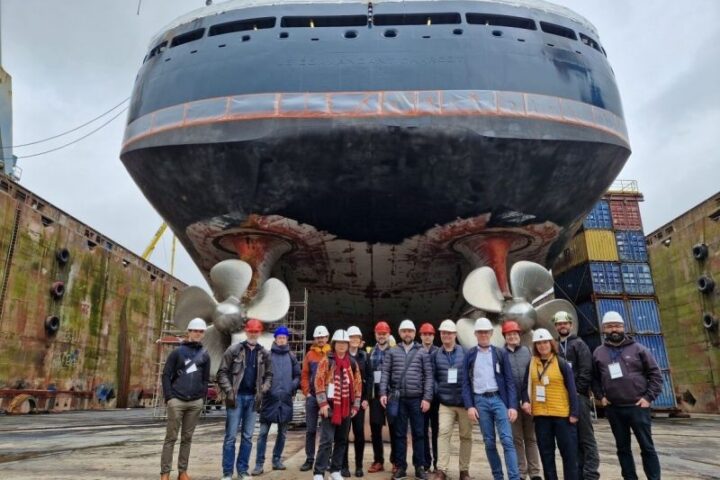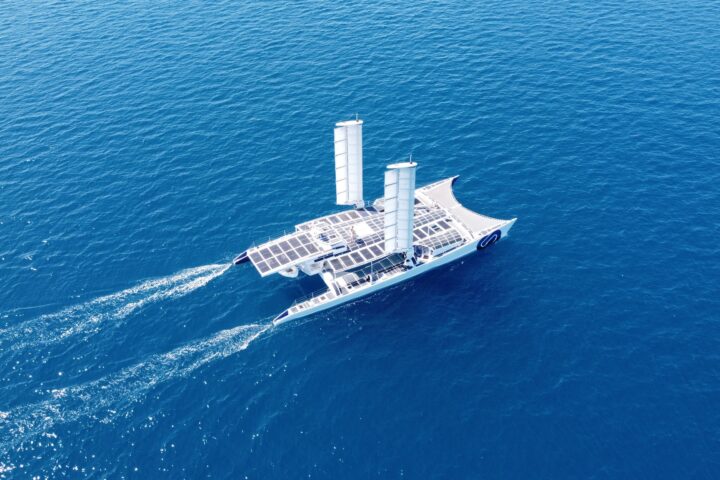In an era where digital experiences dominate, a unique project is setting sail to bring art directly to the people. The ArtExplorer, a 47-metre-long catamaran, is poised to become the world’s first floating museum, offering a fresh approach to cultural engagement and accessibility.
Designed by architects Axel de Beaufort and Guillaume Verdier, this innovative vessel boasts a height of 55 metres and can accommodate up to 2,000 visitors daily. Built at the Perini Navi shipyard in Italy, the ArtExplorer is not just a feat of naval engineering but a mobile platform for artistic expression and education.
At the heart of this nautical museum lies an immersive exhibition created in collaboration with the Musée du Louvre. The exhibition, “Présentes,” offers a reflective journey into the role and representation of female figures in Mediterranean culture. Visitors can expect a two-part experience: an educational documentary on the aft deck and an immersive exhibition in the catamaran’s core.
Similar Posts
The ArtExplorer doesn’t stop at visual arts. In partnership with Ircam and Ircam Amplify, the vessel offers a unique “Sound Odyssey,” inviting visitors to explore the auditory sensations of the Mediterranean through both real and imaginary soundscapes.
Frédéric Jousset, the visionary behind Art Explora, explains the concept: “The Mediterranean has been instrumental in trading goods and waging wars since antiquity. Why not also utilise it as a means of conveying culture?” This statement encapsulates the project’s aim to transform maritime travel into a vehicle for cultural dissemination.
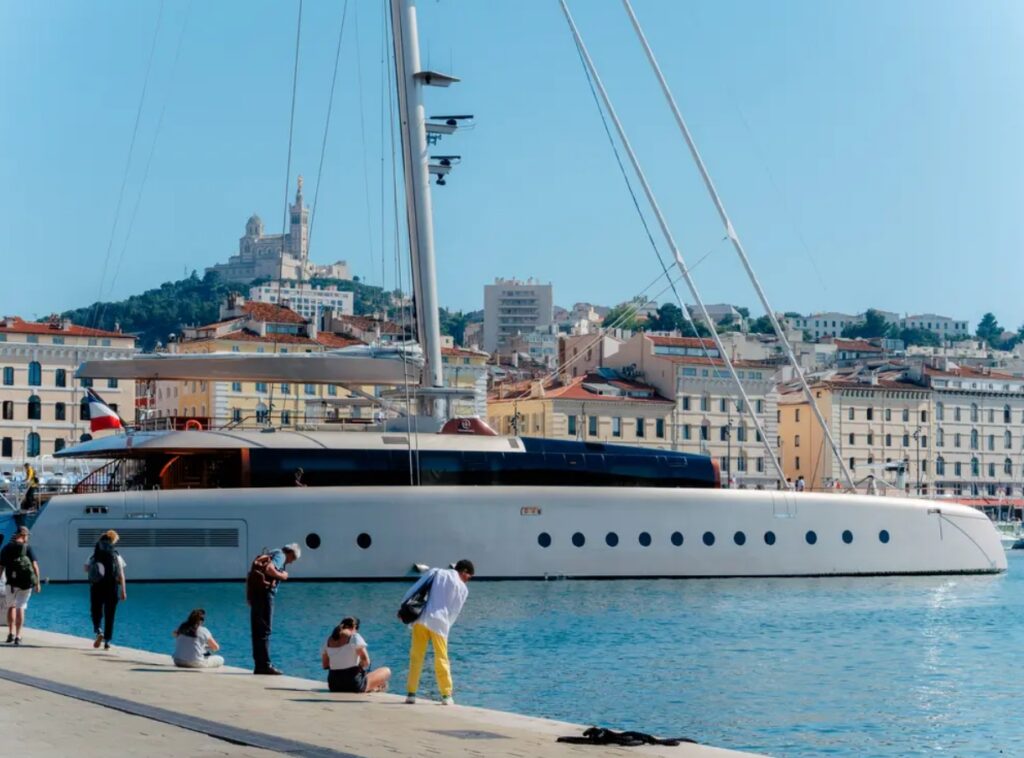
The vessel’s design is a marvel of modern engineering. With a beam of 17.3 meters, it offers ample space for multiple viewing galleries. The mast, rising 55 meters above the waves, allows wind-powered travel in most conditions, aligning with contemporary sustainability goals.
Technical specifications reveal the ArtExplorer’s cutting-edge nature. Powered by twin Caterpillar C7 diesel engines supplemented by e-power, the catamaran can achieve a speed of up to 10 knots (11.5 mph/18.5 kph) even in low wind conditions. The deckhouse features 700 square feet (65 square meters) of solar panels, generating 12 kW of energy. A substantial lithium battery bank enables over six hours of operation at full load, emphasizing the project’s commitment to environmental responsibility.
Giovanni Costantino, founder and CEO of The Italian Sea Group, describes the ArtExplorer as “the result of continuous investment in the study and research of systems to reduce emissions and contribute to improving air quality and the health of our seas.”
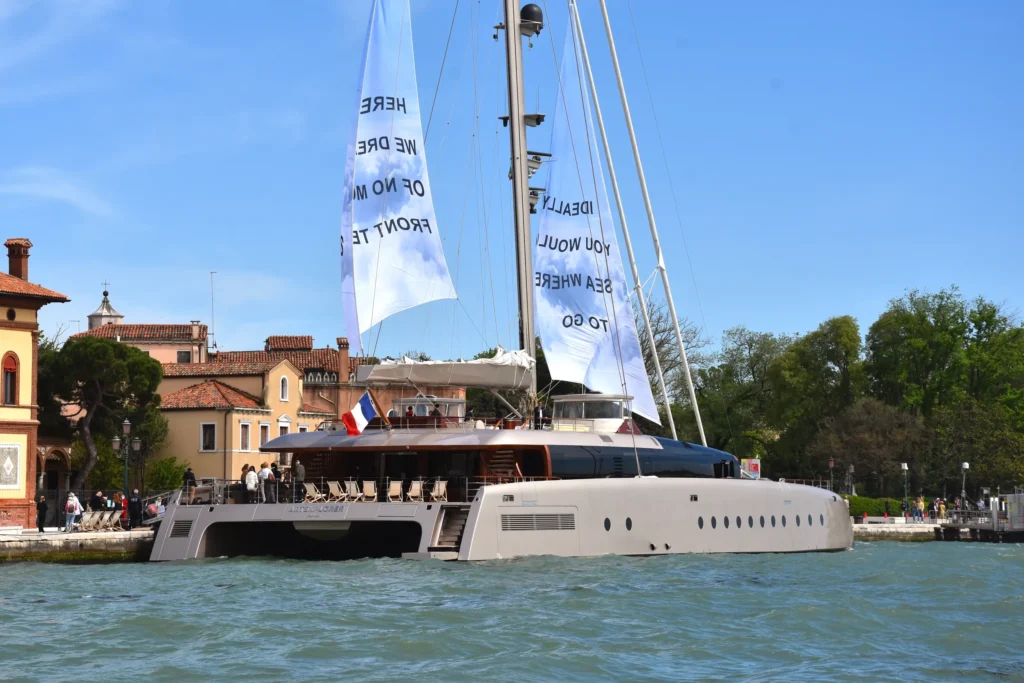
The interior of the ArtExplorer is equally impressive. The central “tunnel” is encased in removable LED panels, creating a 16-meter-long high-resolution display. This space serves multiple functions, transforming from an art gallery to a workshop or conference area as needed.
Jean-Pierre Casanova, CEO and co-founder of Akumendo, sheds light on the technological challenges: “It’s an incredible challenge to find space for all the devices and cabling a project like this demands.” The solution came in the form of Crestron DM NVX® AV-over-IP technology, enabling seamless content delivery both onboard and to dockside displays.
The inaugural exhibition, curated by Nomi Daucé from the Louvre Abu Dhabi, will explore the representation of women in Mediterranean art through the ages. This thematic approach underscores the project’s commitment to fostering cultural dialogue and understanding.
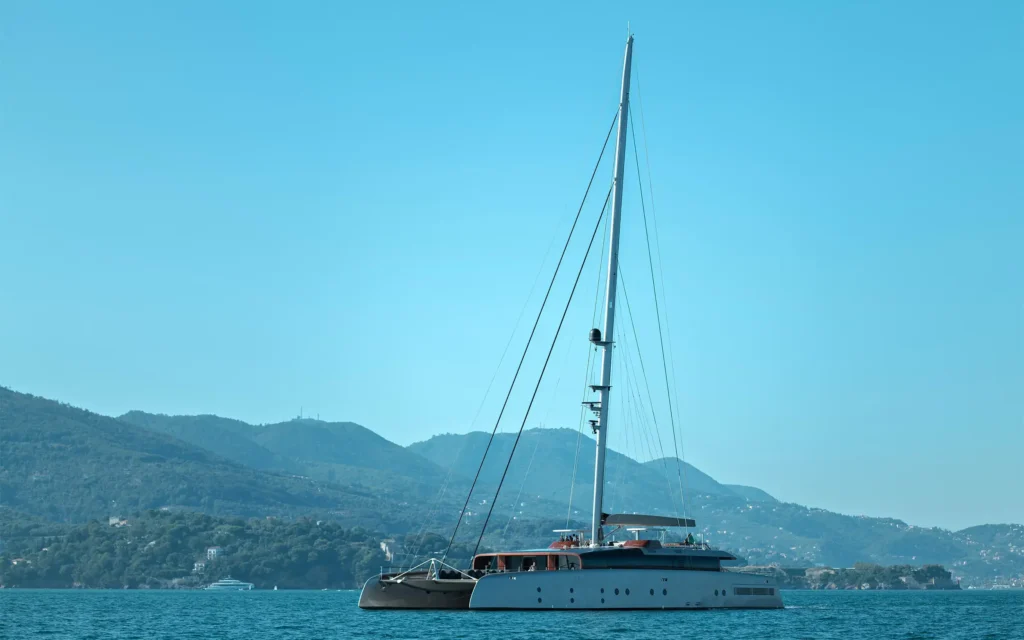
As the ArtExplorer prepares for its maiden voyage, it represents more than just a novel approach to museum curation. It embodies a shift in how we conceive cultural spaces and access to art. By bringing masterpieces to coastal communities, it democratizes the art experience, making it accessible to those who might never step foot in a traditional museum.
The project also aligns with broader trends in mobile museums and pop-up exhibitions, responding to the growing demand for flexible, accessible cultural experiences. As museums worldwide grapple with declining visitor numbers and funding challenges, the ArtExplorer offers a compelling model for reaching new audiences and revitalising public engagement with art.
However, questions remain about the long-term sustainability and impact of such a venture. Will the novelty of a floating museum translate into sustained interest and meaningful cultural exchange? How will the project navigate the complex logistics of international maritime law and cultural property regulations?
As the ArtExplorer sets sail on its ambitious journey, it carries with it the potential to reshape our understanding of cultural dissemination and accessibility. Whether it becomes a model for future mobile museums or remains a unique experiment in art curation, its voyage is one that the art world will be watching closely.
